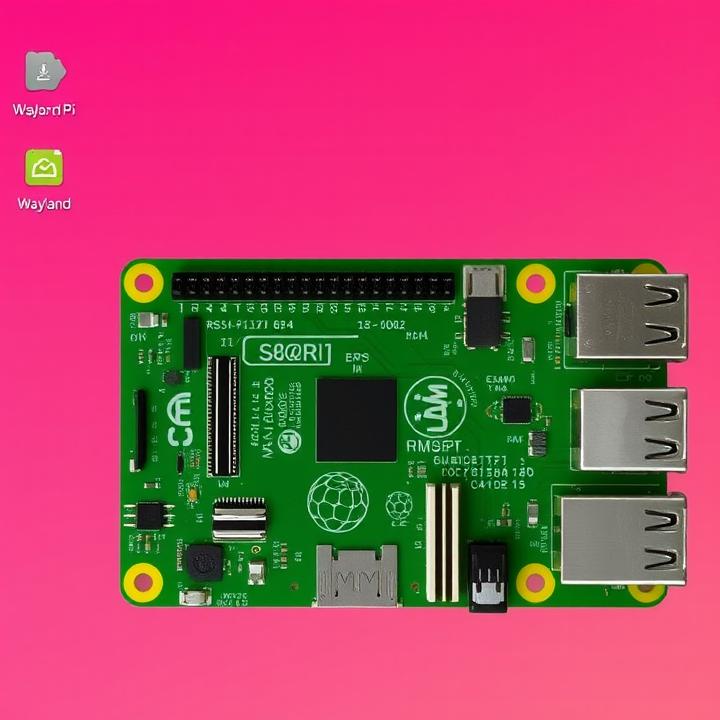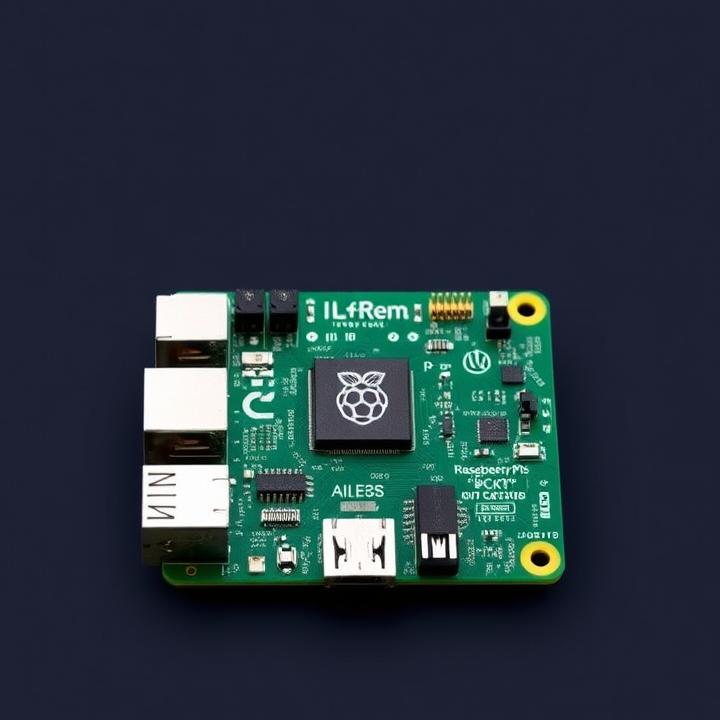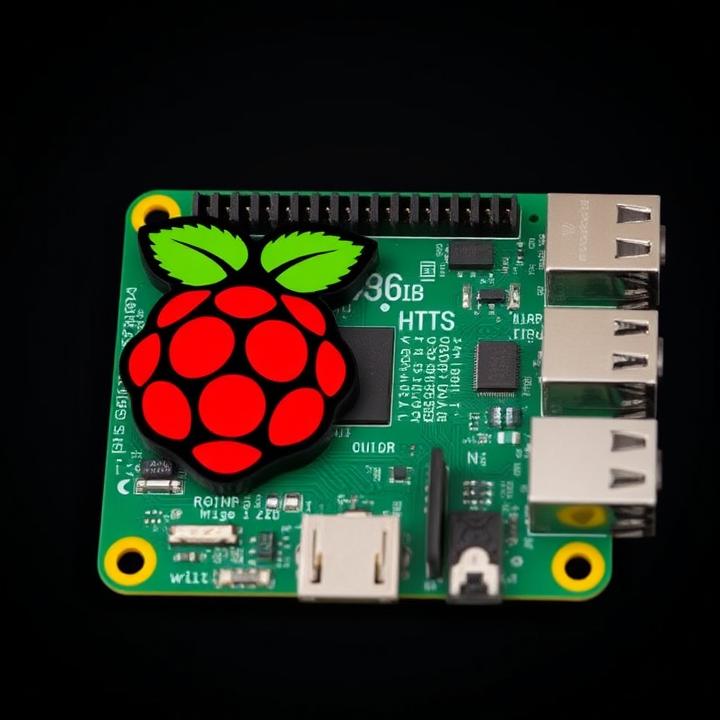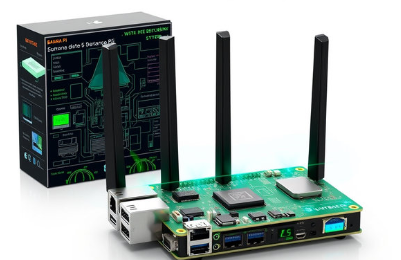Discover why Raspberry Pi OS has made the shift from X11 to Wayland as its default display server. This move brings significant performance improvements, enhanced security, and better hardware support for modern devices.
Explore the key advantages of Wayland over its predecessor, and understand how this transition will impact your Raspberry Pi experience. Whether you’re a developer, enthusiast, or beginner, learn about the benefits of Wayland for graphical rendering, multi-monitor setups, and real-time performance. Get ready for a smoother, more secure computing experience with Raspberry Pi OS.
Wayland and Its Impact on Raspberry Pi OS
Raspberry Pi OS has traditionally used the X Window System (X11) for graphical display management. X11 has been the standard for decades but has limitations when it comes to performance, security, and modern computing demands. With the recent move to Wayland as the default display server, Raspberry Pi OS is entering a new era of graphical performance, better security, and more seamless integration with modern hardware and software. This transition is significant for Raspberry Pi enthusiasts, developers, and users who rely on the Pi for various computing tasks.
Wayland is a more modern alternative to X11. Unlike X11, Wayland is designed to be simpler, more efficient, and inherently more secure. One of the key benefits of Wayland is its ability to provide smoother graphics rendering and better performance, especially when used with hardware-accelerated graphics. With this shift, Raspberry Pi OS is aiming to improve overall user experience and support newer technologies.
This article will explore the reasons behind the transition to Wayland, the benefits it offers, and the potential challenges Raspberry Pi users might face with this new default display server. By examining these aspects, we will gain a better understanding of what the move to Wayland means for Raspberry Pi OS users.
Why Raspberry Pi OS is Switching to Wayland
The decision to switch from X11 to Wayland on Raspberry Pi OS was driven by several factors, most notably performance improvements, security enhancements, and better integration with modern hardware. Here’s a breakdown of why the Raspberry Pi team made the shift:
Performance Benefits
Wayland is designed to be a lighter, more efficient display server than X11. X11, while being feature-rich, carries legacy code that often leads to unnecessary complexity. Wayland, in contrast, has been designed with simplicity in mind, reducing overhead and offering a more streamlined approach to rendering graphics. For users of Raspberry Pi, this means faster graphical performance and less system resource usage—important factors for a low-power device like the Raspberry Pi.
One key advantage of Wayland over X11 is that it integrates better with GPU hardware acceleration, a crucial feature for modern graphics. While Raspberry Pi’s GPUs aren’t as powerful as those in high-end desktops, they still benefit from smoother graphics and less lag when using Wayland, especially for applications that require real-time rendering, such as video playback and interactive applications.
Security Improvements
Security is another area where Wayland excels. X11 allows for less restricted communication between applications and the display server, making it easier for malicious programs to intercept or tamper with sensitive data. Wayland, on the other hand, uses a more controlled communication model. Each application is confined within its own window, preventing it from interacting with other applications or the display server directly. This architecture improves the security of the operating system, protecting users from certain types of attacks, such as those targeting the graphical environment.
Modern Hardware Support
The growing trend of high-definition displays and multi-monitor setups has put pressure on X11, which wasn’t designed with these technologies in mind. Wayland, being newer and built for modern systems, offers better support for advanced display technologies like 4K resolution, high refresh rates, and multiple displays. The transition to Wayland ensures that Raspberry Pi OS can handle such displays more effectively, providing a better user experience for those using newer monitors and displays with their Raspberry Pi setups.
By switching to Wayland, Raspberry Pi OS ensures compatibility with modern display technologies and prepares the platform for future graphical developments. The shift marks an important step in Raspberry Pi OS evolving with the broader Linux ecosystem, where Wayland adoption has been increasing steadily in recent years.
Features of Wayland and Its Advantages Over X11
Wayland introduces several features that improve upon the shortcomings of X11. Understanding these features is key to appreciating the benefits that come with the transition:
1. Simplified Codebase
One of the main selling points of Wayland is its simplified codebase. X11 has accumulated decades of legacy code, which makes it difficult to maintain and prone to bugs. In contrast, Wayland has a more modern and minimalistic design, which makes it easier for developers to work with and optimize. This leads to fewer crashes, bugs, and performance issues, resulting in a smoother user experience.
2. Reduced Latency
Wayland reduces latency in graphical rendering, an important factor in modern computing. The display server is closer to the GPU in Wayland than in X11, allowing for faster updates to the screen. This reduction in latency is particularly beneficial for applications requiring real-time rendering, such as gaming, video streaming, and interactive multimedia applications.
3. Direct Rendering
Wayland allows direct rendering of images and video to the screen. This means that rather than the image being processed and sent through multiple layers, it is rendered directly by the compositor. This process reduces the time it takes for visual elements to appear on the screen, improving performance and reducing visual artifacts like tearing or stuttering.
4. Better Multi-Monitor Support
Wayland handles multi-monitor setups much more gracefully than X11. While X11 has a tendency to struggle with multiple screens, especially when switching resolutions or orientations, Wayland handles these tasks smoothly. This is particularly important for Raspberry Pi users who may want to connect multiple monitors for productivity, gaming, or other purposes.
5. Security Enhancements
As mentioned earlier, one of the standout features of Wayland is its security model. By isolating applications from each other and preventing them from interfering with the display server, Wayland creates a more secure environment. Users can be confident that their data and applications are protected from malicious code running on the same system.
Compatibility Considerations and Potential Issues
While Wayland offers many advantages, transitioning from X11 to Wayland on Raspberry Pi OS may present some challenges for users, especially those with older hardware or software that isn’t fully compatible with Wayland.
1. Compatibility with Older Applications
Some legacy applications that were built for X11 may not run properly or at all on Wayland. This is because these applications are designed to work within the X11 environment and rely on features that are not present in Wayland. Fortunately, many popular Linux applications are being updated to support Wayland, but users may still encounter issues with older or niche software.
2. Graphics Driver Support
Although Wayland is designed to work with modern graphics hardware, some graphics drivers may not fully support Wayland on the Raspberry Pi. For instance, while the VC4 GPU driver on Raspberry Pi hardware supports Wayland, it may not perform as efficiently as the proprietary drivers available for more powerful systems. As more development happens in the Linux community, these issues are expected to be resolved, but users might experience some initial hiccups in terms of graphics performance.
3. Transition for Advanced Users
Advanced users who are accustomed to fine-tuning their X11 configurations may need to adjust their workflows when moving to Wayland. The configuration tools available in Wayland are different from those in X11, and users may need to familiarize themselves with new methods of tweaking their system for optimal performance.
4. Limited Support for Some Compositors
While Weston is the reference compositor for Wayland, some third-party compositors may not support all features or may not yet offer the level of customization available in X11. Users who rely on specific compositors might need to wait for further updates before adopting Wayland fully.
How to Transition to Wayland on Raspberry Pi OS
For Raspberry Pi users who want to try Wayland, the transition is relatively straightforward. Raspberry Pi OS now includes Wayland by default in its latest releases, so users with the most up-to-date OS versions should already be running Wayland. However, for those who want to ensure they are using Wayland, here’s how to make the switch:
- Update Raspberry Pi OS: The first step is to ensure that your Raspberry Pi OS is up to date. This can be done by running the following commands:
- Enable Wayland: If Wayland is not enabled by default, users can enable it by modifying the
/etc/xdg/lxsession/LXDE-pi/autostartfile. Add the following line: - Restart the Raspberry Pi: After making the necessary changes, restart the Raspberry Pi to apply the changes.
Once these steps are completed, the Raspberry Pi will run Wayland as the default display server.
Benefits of Wayland for Developers
For developers working with Raspberry Pi OS, the transition to Wayland opens up a world of possibilities. Here are a few benefits for developers:
1. Easier Development for Modern Applications
Wayland’s simpler architecture makes it easier to develop modern applications. With fewer complexities in the display system, developers can focus more on their application’s core functionality rather than dealing with quirks of the underlying system.
2. Improved Performance for Resource-Intensive Applications
Developers working on performance-intensive applications will appreciate the better resource management of Wayland. Since Wayland reduces graphical rendering overhead, applications that require smooth graphics will run faster and more efficiently.
3. Compatibility with Modern Libraries
Wayland is built to be compatible with modern libraries and technologies like OpenGL and Vulkan. Developers working with these technologies can leverage the advantages of Wayland, such as better GPU acceleration and multi-displayHere’s the rest of the article for “Raspberry Pi OS Moves to Wayland by Default”:
7. Performance Comparison: X11 vs. Wayland on Raspberry Pi OS
When comparing X11 and Wayland on Raspberry Pi OS, the differences are immediately noticeable in terms of performance, responsiveness, and overall user experience. Here’s a breakdown of how the two display servers measure up:
1. Graphics Performance
X11 has been a reliable option for many years, but as Raspberry Pi hardware has advanced, the need for a more efficient and modern display server has become apparent. With Wayland, the graphics rendering is handled directly, reducing the overhead that X11 traditionally introduced. Wayland has the advantage when it comes to supporting hardware-accelerated graphics, leading to smoother video playback, better rendering of graphical applications, and reduced graphical glitches, such as screen tearing.
On Raspberry Pi, where resource optimization is crucial, Wayland’s streamlined design delivers faster graphics rendering, resulting in improved real-time performance—especially important for applications like video streaming and interactive 3D apps.
2. Latency Reduction
Another noticeable improvement is the reduction in latency. In testing, users have reported that Wayland offers better input lag compared to X11. With X11, there is a slight delay in rendering graphics after user input, but Wayland addresses this by optimizing the direct communication between the compositor and the display hardware. This translates to faster interactions with graphical user interfaces, which is a significant boost for those relying on responsiveness in their workflow.
3. Multi-Monitor Setup
For users running multi-monitor setups, Wayland provides a more stable and efficient experience. X11, especially on resource-constrained devices like Raspberry Pi, often struggles with dynamically adjusting to multiple displays. Wayland’s inherent support for modern display features like multi-monitor configurations ensures a smoother experience, with better resolution handling and seamless transitions between screens.
4. System Resource Efficiency
Wayland’s more minimalist architecture means it consumes fewer system resources, making it ideal for lower-powered devices like Raspberry Pi. On systems with limited resources, such as the Raspberry Pi 4, this resource efficiency means smoother performance and better system responsiveness. Since Raspberry Pi OS is aimed at both beginners and developers, optimizing resource usage ensures that users can run a variety of applications without significant performance degradation.
FAQ – Frequently Asked Questions about Wayland on Raspberry Pi OS
1. What is Wayland, and why is it important for Raspberry Pi OS?
Wayland is a modern display server protocol that replaces the older X11 system. It provides improved security, better performance, and more efficient graphics rendering. The transition to Wayland enhances the user experience by allowing for smoother graphics and a more secure environment.
2. Will Wayland work on older Raspberry Pi models?
While Wayland is supported on newer Raspberry Pi models, it might not run as efficiently on older ones due to hardware limitations. The Raspberry Pi 4 and later models are the best candidates for using Wayland effectively.
3. How does Wayland improve security?
Wayland improves security by isolating applications and limiting their access to the display server. Unlike X11, where applications can freely interact with the graphical environment, Wayland restricts this, providing better protection against certain types of attacks.
4. What are the main differences between X11 and Wayland?
Wayland is designed to be simpler, more efficient, and secure compared to X11. It reduces overhead, improves graphical rendering, and has better support for modern hardware and software technologies like 4K resolution and GPU acceleration.
5. How do I switch to Wayland on Raspberry Pi OS?
To use Wayland on Raspberry Pi OS, ensure your OS is up to date and enable Wayland through the Raspberry Pi OS settings or by modifying configuration files. The update to Wayland is generally enabled by default in newer releases of Raspberry Pi OS.
6. Are there any compatibility issues with applications on Wayland?
Some legacy applications built for X11 may not work properly with Wayland. However, most popular Linux applications are being updated to support Wayland, and compatibility is improving.
7. Does Wayland support hardware-accelerated graphics?
Yes, Wayland works better with hardware-accelerated graphics than X11, providing smoother video playback and better graphics performance on devices like the Raspberry Pi, especially when using modern GPUs.
8. Can I use multiple monitors with Wayland on Raspberry Pi OS?
Yes, Wayland offers better multi-monitor support than X11, enabling smoother transitions between displays, higher resolutions, and better overall handling of multi-screen setups.
9. What benefits does Wayland offer for developers?
For developers, Wayland offers a simpler architecture, better performance, and improved support for modern libraries like OpenGL and Vulkan, making it easier to develop applications that take full advantage of modern graphical technologies.
10. Will Wayland replace X11 completely on Raspberry Pi OS?
While Wayland is now the default on Raspberry Pi OS, X11 will likely still be available as an option for the foreseeable future. Some users and applications may still rely on X11, especially for legacy use cases.
With a more secure, efficient, and modern graphical system in place, users can look forward to better performance and a more stable environment. Whether you’re an enthusiast, developer, or new user, Wayland on Raspberry Pi OS promises to enhance your experience with the Pi.





